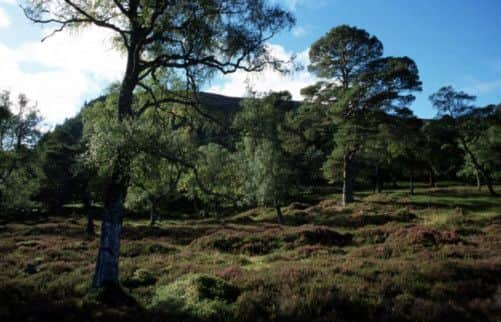Scots given chance to choose their national tree
This article contains affiliate links. We may earn a small commission on items purchased through this article, but that does not affect our editorial judgement.


Now Scots are to be given the chance to choose their own national tree after a consultation was launched by the Scottish Government.
Managed by Forestry Commission Scotland, the three-month exercise will seek to establish whether the public would like a national tree, and what species it should be.
Advertisement
Hide AdAdvertisement
Hide AdThe consultation, which began yesterday, follows a campaign by Alex Hamilton, a member of the public who brought a petition to the Scottish Parliament which received cross-party support from MSPs.


Environment minister Paul Wheelhouse said: “People in Scotland have a great affection for trees. Our woodlands and forests are part and parcel of our heritage and shape our often-rugged, green and stunning landscapes, and play a vital role as green lungs, storing carbon and improving air quality.
“A national tree could be a powerful symbol to help raise the profile of trees and their contribution to so many aspects of today’s society. At no time has it been more important, as some of our woodlands are currently under threat from a number of serious tree health problems.
“We would like to hear from as many people as possible, both young and old, on whether they would like a national tree of Scotland. If the answer is yes, please tell us which species you think would be best and why.”
While most nations are associated with a particular species, only a few countries have an official tree recognised as a national symbol. Despite its strong association with the maple, Canada only made the tree a national symbol in 1996, while the oak was given official status by the US Congress in 2004.
The front-runner for Scotland is likely to be the Scots pine, which is the only native pine in Britain and the tree suggested by Mr Hamilton’s original petition.
James McDougall, who is managing the consultation for Forestry Commission Scotland, said: “If you were to ask the Scottish public what makes the landscapes of Scotland so stunning, I’ll bet you that trees are likely to come up as part of the answer.
“Our forests and woodlands are the envy of many countries and they have helped shape what Scotland is today. Most people will have a favourite tree – it might be the Scots pine, the rowan, hazel, the silver birch or maybe even the holly. They are all great in their own right.”
Advertisement
Hide AdAdvertisement
Hide AdRory Syme, from the Woodland Trust Scotland, added: “An official national tree would be a fantastic legacy of the Year of Natural Scotland, providing recognition of the role that native trees have in shaping the nation’s landscape and identity.
“Scots pine will undoubtedly be a favourite, but many other species, such as rowan and aspen, have a rich heritage of their own and could be considered.
“Alex Hamilton deserves a great deal of credit for getting his campaign to this stage. We will be encouraging as many people as possible to take part to help demonstrate the public appetite for this.”
A poll by the Woodland Trust Scotland earlier this year found two-thirds of people backed Scots pine for the national tree, with rowan in second place.
The consultation will end on 3 December 2013 with the outcome being announced early in 2014.
Suggestions can be made at www.forestry.gov.uk/scotlandsnationaltree
Further details will also be available throughwww.facebook.com/enjoyscotlandsforestsor www.twitter.com/fcscotlandnews.
We’ll probably pick pine, but it could be yew
Growing up to 36 metres in height and with a lifespan of often more than 500 years, the Scots pine is the hardy conifer which stands tall in Scotland’s ancient forests.
Advertisement
Hide AdAdvertisement
Hide AdThe species, pictured, was the one suggested by the petition brought to the Scottish Parliament last year calling for an official national tree.
Other possibilities include the rowan, which produces masses of bright red berries in autumn that are attractive to birds such as redwings and fieldfares. According to folklore, rowan trees protect against witches, which saw them planted near houses in medieval times. They have a lifespan of 120 years and can grow up to 15m in height. Another candidate is the ash, a much sought-after timber tree due to its flexibility and capacity to absorb shocks. Ash leaves do not grow until May, which gives other plants under the tree a chance to grow well, making ash a good choice for plants and wildlife.
However, if a tree were to be chosen based on history alone, the yew would be one of the best candidates.
One of the oldest trees in Europe is the Fortingall Yew, which is growing in Glen Lyon, Perthshire. It is said to be between 2,000 and 5,000 years old. Yew trees grow to a height of 29 metres.